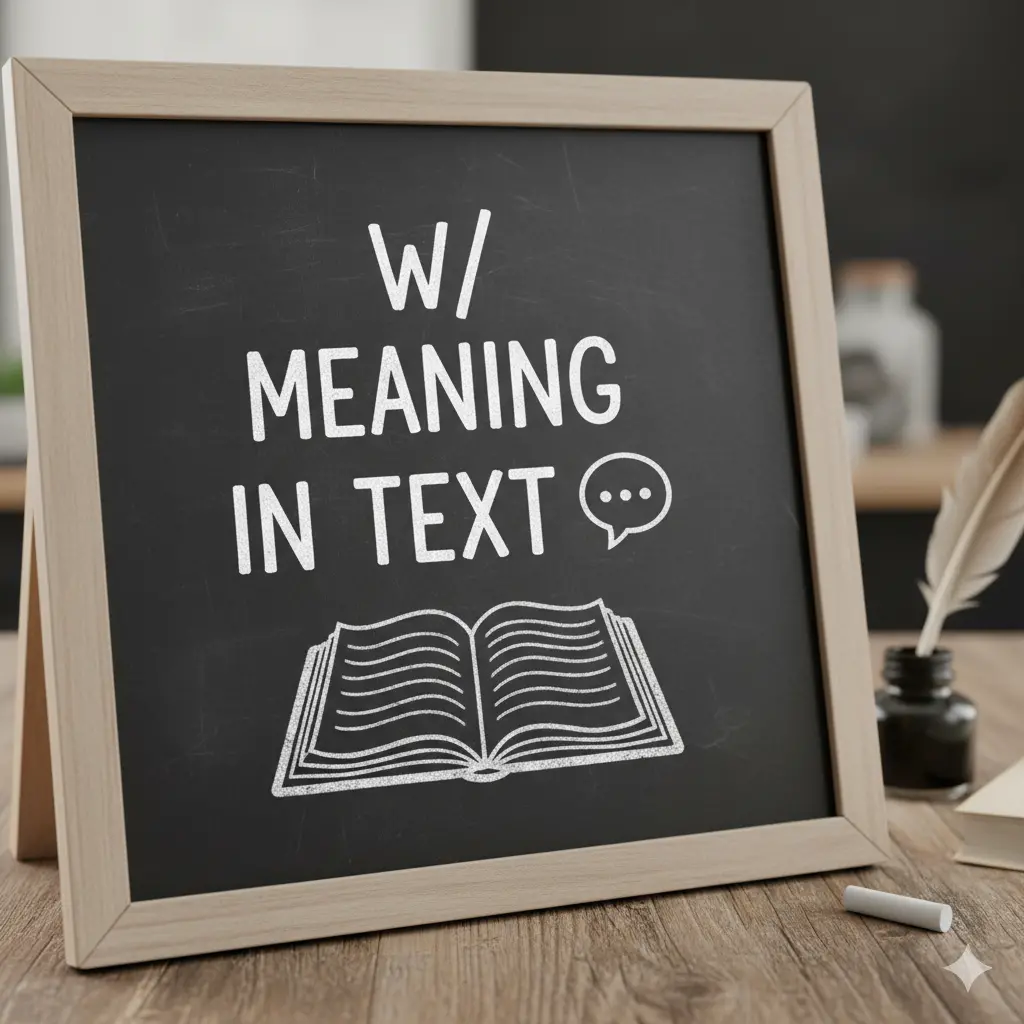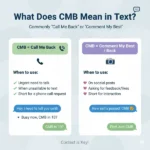Ever been scrolling through a chat and suddenly see someone type “w/” — and your brain freezes for a second?
Same! The first time I saw it, I genuinely stared at the screen thinking, “Is this a typo? A new emoji? What is this little slash doing here?”
Turns out, it was something incredibly simple… and I laughed at myself for overthinking it.
Here’s the easy version:
Quick Answer: “w/” means “with.”
It’s a short, casual, fast-to-type way of saying with in texts and social media conversations.
Let’s break it down clearly so you can use it confidently anywhere.
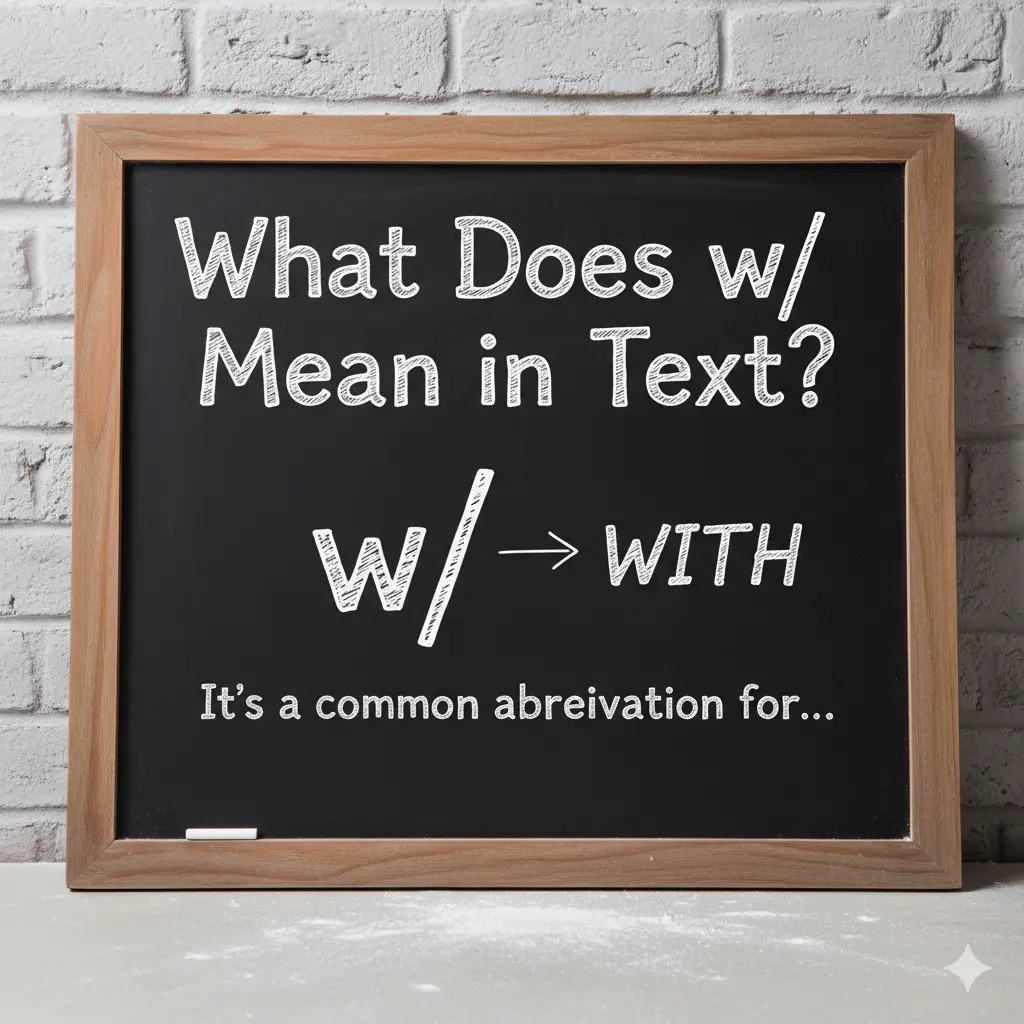
What Does w/ Mean in Text?
The slang “w/” is simply an abbreviation for “with.”
People use it to type faster and keep messages short — especially on Snapchat, Twitter/X, Instagram, and everyday texting.
Example:
“going w/ my friends today 😄”
(Translation: going with my friends today)
In short: w/ = with = a quick, casual shortcut.
Where Is w/ Commonly Used?
You’ll see w/ almost everywhere in casual digital communication:
- 📱 Text messages – super common
- 🤳 Snapchat – used to caption pics or snaps
- 📸 Instagram stories & comments – “out w/ bae”
- 🎮 Gaming chats – “queue w/ me?”
- 🐦 Twitter/X posts – short captions, limited characters
- 💬 Group chats – fast responses
Tone:
➡️ Casual
➡️ Friendly
➡️ Informal
Not recommended for professional or formal messages.
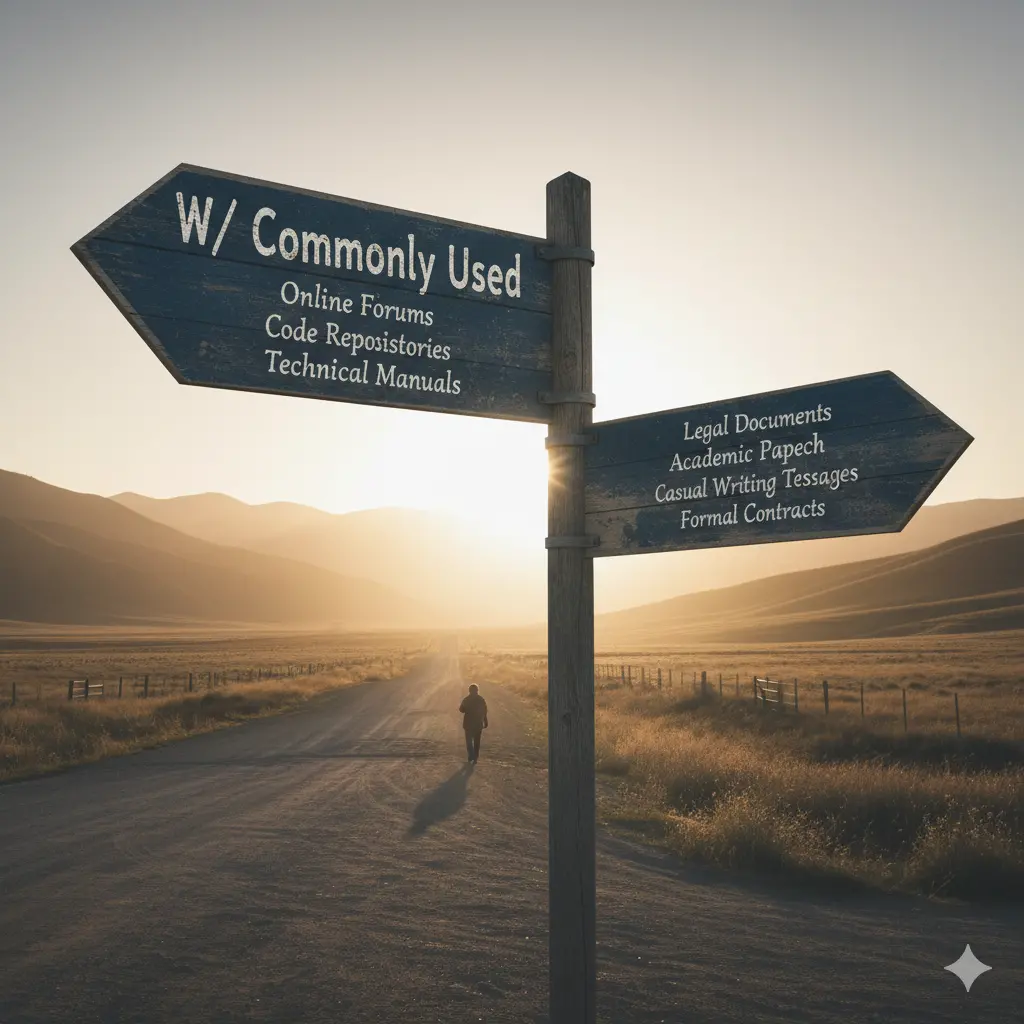
Examples of w/ in Conversation
Here are real, natural chat-style examples:
A: u coming tonight?
B: yeah, w/ sara 😄
A: who r u going w/?
B: w/ my cousins
A: can u send the notes?
B: sure, i’ll share them w/ u in a min
A: wanna play later?
B: yep, w/ my squad rn
A: did u talk w/ him?
B: nah, not yet 😭
A: r u busy?
B: a bit. out w/ mom
A: post the pic w/ me too 😂
B: hahaha okay ok

When to Use and When Not to Use w/
✅ Use “w/” when:
- You’re texting casually with friends.
- You want to type fast.
- The tone is relaxed, fun, or social.
- You’re replying briefly.
- You’re posting on social media.
❌ Don’t use “w/” when:
- Messaging your boss or teacher.
- Writing professional emails.
- Communicating in formal settings.
- The context is serious or sensitive.
- Clarity is more important than speed.
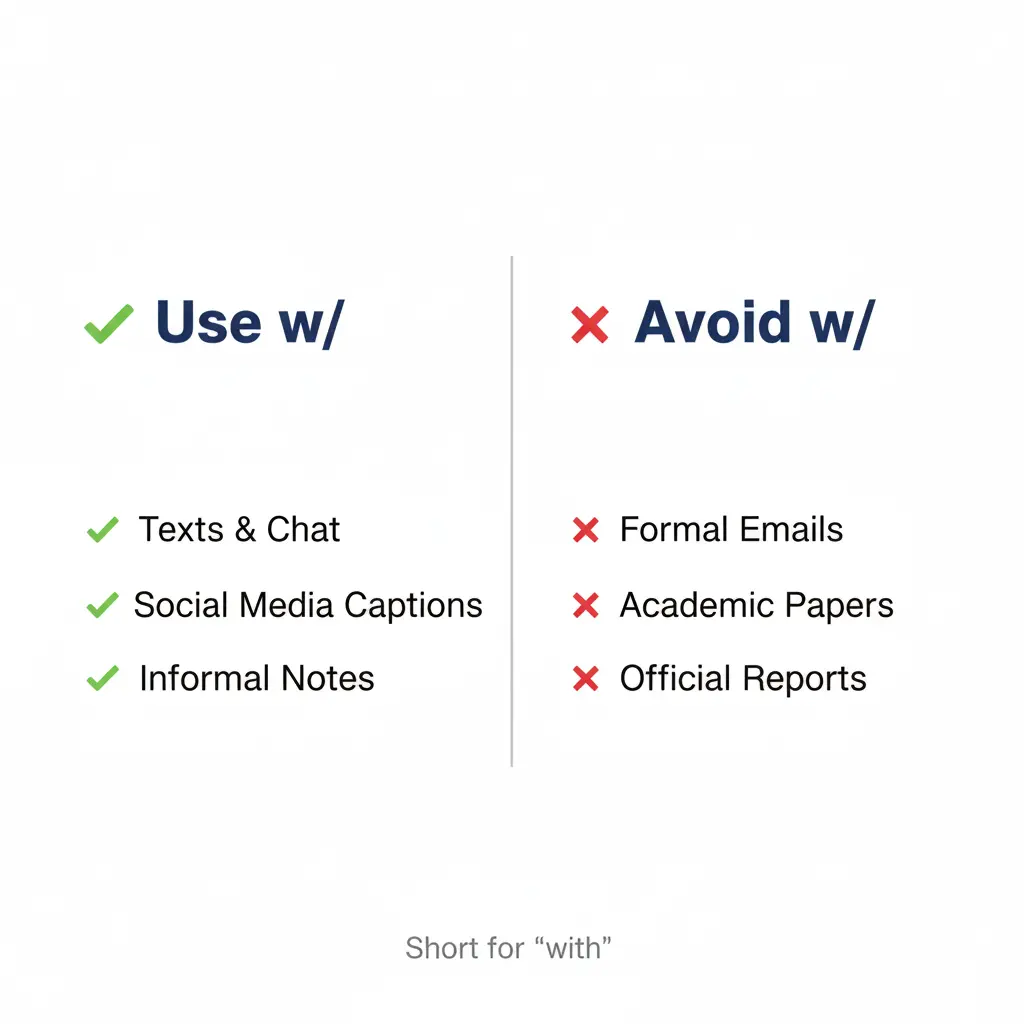
Comparison Table
| Context | Example Phrase | Why It Works |
|---|---|---|
| Friend Chat | “I’ll go w/ you 😄” | Casual & friendly |
| Work Chat | “I will go with you.” | Professional & clear |
| Formal Email | “I will review it with you.” | Proper, polished language |
| Social Media | “out w/ my team today 💛” | Short & trendy |
| School Message | “Discuss with the class group.” | Clear and formal |
Similar Slang Words or Alternatives
| Slang | Meaning | When to Use |
|---|---|---|
| w/o | without | Short casual chats |
| w.e. | whatever | Chill, informal tone |
| wbu | what about you? | Friendly back-and-forth |
| bc / b/c | because | Quick explanations in casual chats |
| nvm | never mind | When canceling or clarifying |
| omw | on my way | Fast responses while texting |
Conclusion
“w/” is one of those tiny shortcuts that makes texting faster and more natural. Now that you know it simply means “with,” you can use it confidently in Snapchat chats, Instagram captions, or casual messages with friends. Just remember — it’s great for everyday conversations but not the right fit for professional or formal communication.
Whether you’re texting plans, captioning a photo, or replying quickly, “w/” keeps things short, smooth, and modern.
FAQs About w/
1. Is “w/” formal grammar?
No. It’s strictly informal and meant only for casual digital communication.
2. Can I use “w/” in professional emails?
No — always use the full word “with.”
3. Is “w/” new slang?
Not really. It’s been used for years, especially in note-taking and texting, but became more common with social media.
4. Is it okay to use “w/” in school notes?
Yes, if your teacher doesn’t mind shortcuts. Otherwise, stick to proper English in assignments.
5. What’s the opposite of w/?
It’s w/o, which means “without.”

